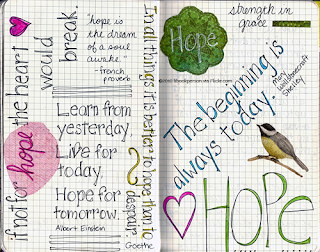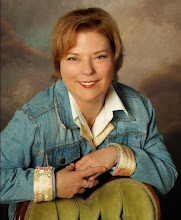The most amazing thing happened to me the other day. I was sitting on the floor clasping a broken bowl that I had recently glued together when, within six inches of my nose, a big spider appeared. What was so extraordinary about this event was my reaction: I looked at it and said in a perfectly normal voice, “Go away, please.” No sonic scream, no paralyzing fear. For over 50 years, spiders made my life miserable, and the life of everyone who lived with me. One time my brother drove from Fremont to Alki beach on a work night to remove an invader from my bathtub; when I was pregnant and my husband was out of town, three spiders in my house spent the night without me to harass, as I went to a motel.
Arachnophobia dominated my life for so long. My fear was so intense, so physical that it rendered me insensible. My heart beat insanely and the pain surged throughout my body, my toes cramped, and I hyperventilated, not able to do anything. God forbid I touch or be touched (for surely I would die) by a horrible beast with furry legs and red eyes, that I could not kill to save my life. My husband would reach out and scoop up the offender and, with utmost gentleness, take it outside. I would obsess for days about another one lurking, hiding, awaiting the moment to persecute me. And quite frequently, especially in the fall, a spider would pop up too close for comfort and I would be in an anxious state for hours, disrupting my activities and sleep.
Enough I said, this has to stop. I went into hypnotherapy for other issues and one day casually mentioned that I had a fear of spiders, probably due to the admonitions of my parents to beware of the black widow spiders that live in dark corners. So now I am an adult and I know to be careful, so could we please address this issue and get some resolution? What ensued during the therapy was a big, jolting surprise.
I was allowed to walk home from kindergarten by myself. Neighbors would often call my name and wave to me as I passed their houses. One neighbor had a wonderful rose garden that would make me literally stop to look and smell the flowers. One day this neighbor invited me into his garage to show me a fantastic new rose; only what he showed me was not a flower. As I backed away, into a corner, I came to a stop underneath a black widow spider’s web.
It makes sense on so many levels that the fear I experienced, transferred onto spiders, is just like being bullied by a pedophile. Mine is not an isolated case, as it is reported that reported by the Dru Sjodin National Sex Offender Public Website (NSOPW), 4 out of 10 children, both girls and boys, have experienced some form of sexual predation by adults and teenagers. And as is so often the case, the predator is someone the child knows.
What can a parent do to ensure a child’s safety? Foremost is communication between parent and child as well as developing trust. We too often instill in our children that adults are to be respected and the child must behave nicely--that translates into “good boys and girls do what an adult tells them to do.” A child’s body and privacy, should always be respected, and never should that child be touched on his or her body, especially in the “bathing suit” areas. Reassure your child that that it is okay to say “no” to an adult who behaves inappropriately or to tell another adult if the child just feels “creepy” around the person. Be sure your child knows that it is okay to “tell on” an adult, and that you will listen without judgment no matter who the adult is. If there are signs of abuse, call 911 and report it. Unfortunately, many times nothing can be done for a variety of reasons; but, give and get support through therapy for the victim if you are certain that your child has been abused. Sexual predators are in our neighborhoods, schools, workplaces, and on the Web. As parents, it is our responsibility to protect our children by giving them the skills necessary for their well-being. Talk about appropriate/inappropriate behavior, and respecting one’s body and privacy as well as the difference between being polite and survival, getting away from an abuser by any means available. Monitor the computer and make sure your child is not being cyber-stalked. There are many websites available on the Internet for guidance and resources. Use them. It is in your child’s best interest.
The Dru Sjodin National Sex Offender Public Website (
NSOPW) is an unprecedented public safety resource that provides the public with access to sex offender data nationwide. NSOPW is a partnership between the U.S. Department of Justice and state, territorial, and tribal governments, working together for the safety of adults and children.
- As many as 1 in 3 girls and 1 in 7 boys will be sexually abused at some point in their childhood.
- Most perpetrators are acquaintances, but as many as 47% are family or extended family.
- In as many as 93% of child sexual abuse cases, the child knows the person that commits the abuse.
- Approximately 30% of cases are reported to authorities.
- Approximately 1.8 million adolescents in the United States have been the victims of sexual assault.
- 33% of sexual assaults occur when the victim is between the ages of 12 and 17.
- 82% of all juvenile victims are female.
- 69% of the teen sexual assaults reported to law enforcement occurred in the residence of the victim, the offender, or another individual.
- Teens 16 to 19 years of age were 3 1/2 times more likely than the general population to be victims of rape, attempted rape, or sexual assault.
- Approximately 1 in 5 female high school students report being physically and/or sexually abused by a dating partner.
- Approximately 1 in 7 (13%) youth Internet users received unwanted sexual solicitations.
- 4% of youth Internet users received aggressive solicitations, in which solicitors made or attempted to make offline contact with youth.
- 9% of youth Internet users had been exposed to distressing sexual material while online.
- 9.2% of cases of maltreatment of children in 2010 were classified as sexual abuse.
- Over 63,000 cases of child sexual abuse were reported in 2010.
Stop It Now! (
website) has developed a warning signs tip sheet to help identify possible warning signs. Any single sign does not mean that a child was sexually abused, but the presence of several suggests that you should begin asking questions and consider seeking help.
Behavior you may see in a child or adolescent:
- Has nightmares or other sleep problems without an explanation
- Seems distracted or distant at odd times
- Has a sudden change in eating habits
- Refuses to eat
- Loses or drastically increases appetite
- Has trouble swallowing
- Sudden mood swings: rage, fear, insecurity, or withdrawal
- Leaves “clues” that seem likely to provoke a discussion about sexual issues
- Develops new or unusual fear of certain people or places
- Refuses to talk about a secret shared with an adult or older child
- Writes, draws, plays, or dreams of sexual or frightening images
- Talks about a new older friend
- Suddenly has money, toys, or other gifts without reason
- Thinks of self or body as repulsive, dirty, or bad




